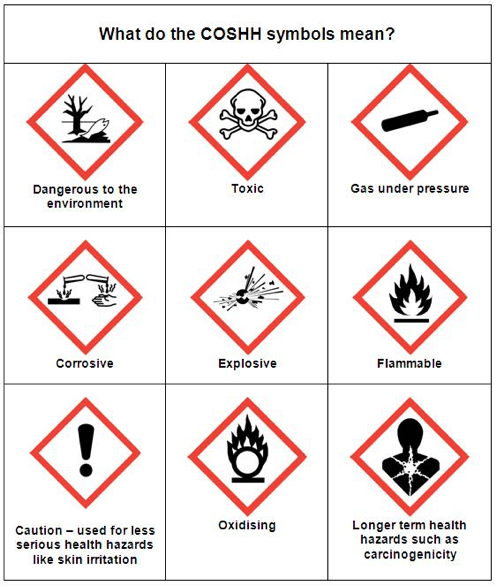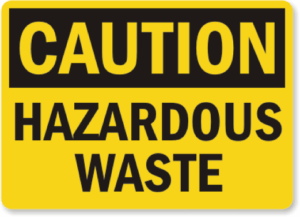Hazardous Substances
According to COSHH (Control of Substances Hazardous to Health), hazardous substances are: “Those that are: Very Toxic, Toxic, Corrosive, Harmful or Irritant”. This includes any substance that has been allocated a Workplace Exposure Limit (WEL), previously known as MEL. Once identified, any hazardous substances in your workplace need to be assessed for potential risk by an individual qualified to do so. Assessment of the following areas is vital: quantity, handling, storage, exposure, use, disposal, accident and emergency procedures and spill response.

According the HSE (Health and Safety Executive), Waste is considered “hazardous” if it, “contains substances or has properties that might make it harmful to human health or the environment”. Crucially, substances were re-classified placing many within the “hazardous” category which required companies to re-think their handling and disposal procedures. Since July 2014, it is an offence to dispose of hazardous waste along with non-hazardous waste in landfill. Examples of hazardous waste include mercury, bromine, asbestos, solvents, pesticides and oils. There are a number of resources available to you that will help you classify different types of waste.
Where are hazardous Substances Found?

Hazardous substances are found throughout the environment, in many organisations and in surprising forms. Hazardous substances can be the dust affecting workers’ lungs; mercury found in thermometers, lamps, batteries and household objects; bromine in agricultural and sanitation products as well as asbestos that can be found throughout the environment. Hazardous substances surround us, information and knowledge are a vital resource to protect the workplace as well as the environment.
How is Hazardous Waste Cleaned Up?
Employers have a duty of care to ensure all hazardous materials are handled correctly and cause no harm. They also have a duty of care to ensure all hazardous substances are disposed of safely and correctly causing no harm to health or to the environment. The COSHH regulations of 2004 cover all activities with hazardous substances. The regulations are useful guidelines for employers and business owners or anyone responsible for safety in the workplace. For large or dangerous spills, calling a professional chemical clean-up company is always the safest option. A professional and experienced company will be properly equipped and technically able to deal with hazardous chemicals in any situation without unnecessary risk to health. For small spills, or clean-up of less harmful substances you will need to follow COSHH guidelines for each substance.
General procedure:
- Classify waste
- Separate and store it appropriately
- Always use a professional company authorised to dispose of hazardous waste
- Complete three copies of the consignment note, one for your records, two for the company
- Retain the records for three years
What to do if you Suspect a Hazardous Waste Problem
In the first instance, safety is paramount, ensure all individuals in the vicinity are kept at a safe distance. Contact your chosen provider of hazardous waste clean-up and disposal. Do not touch the chemical unless wearing appropriate PPE (Personal Protective Equipment) or without proper training. Without knowledge of chemicals and potential reactions it is very easy to find yourself in a dangerous situation.
For further information, call our team 01622 926 505



